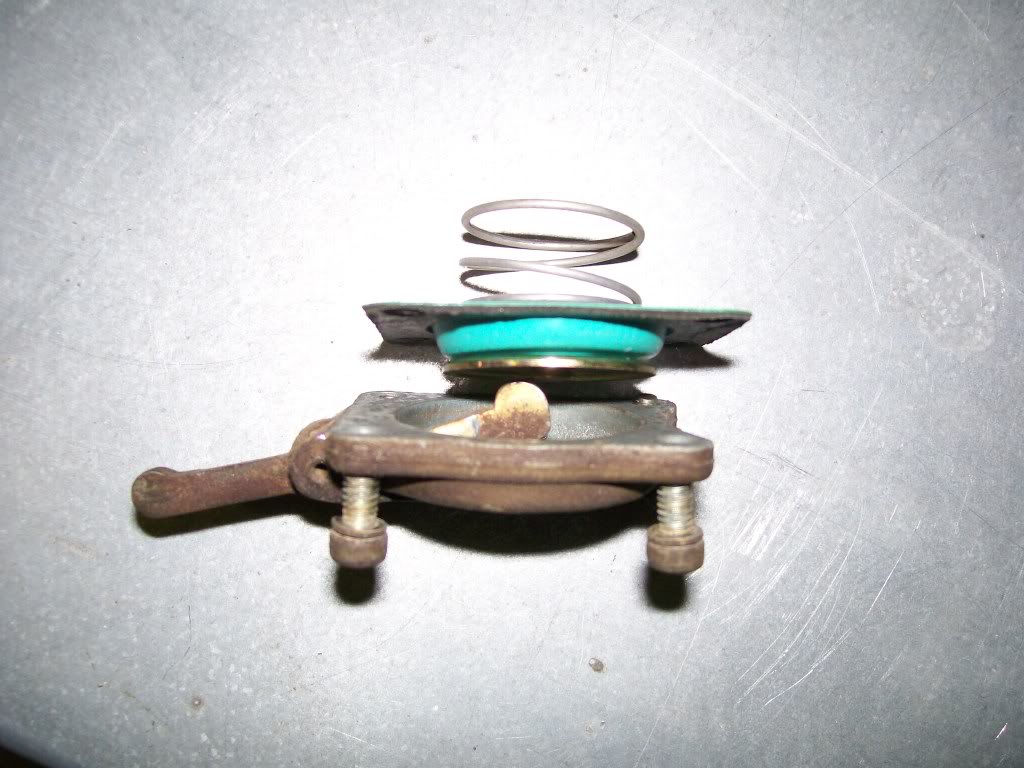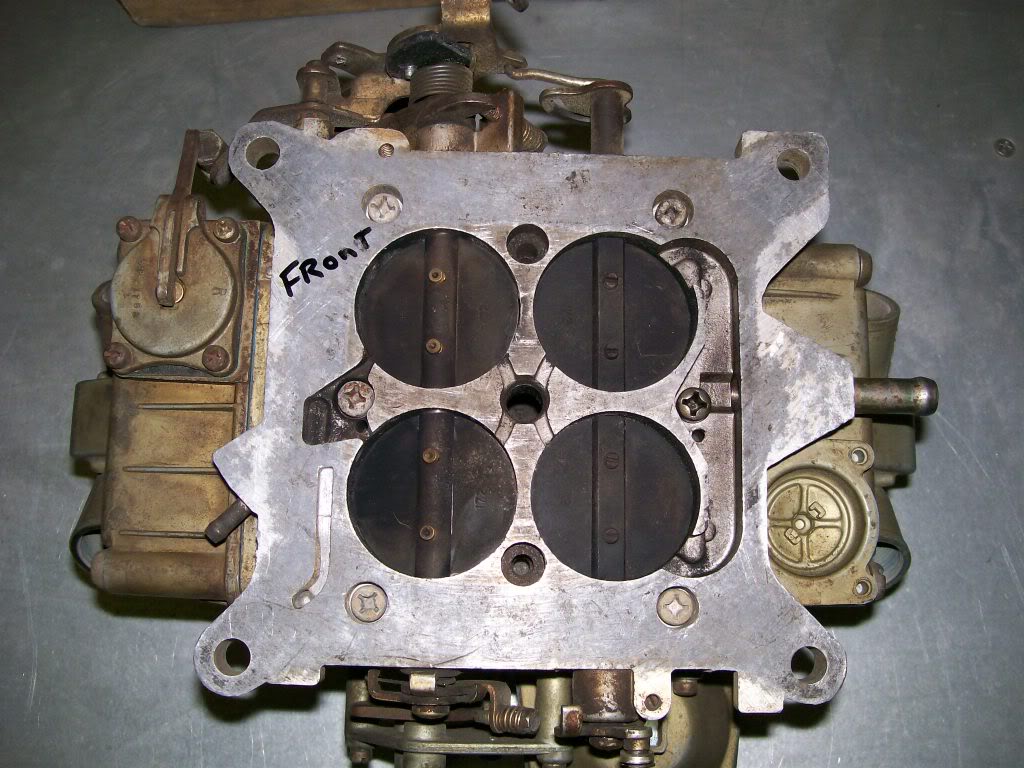You must be logged in to rate content!
2 minute(s) of a 620 minute read
3-2-2012
Let's take a look at the heart of the accelerator pump. In this next picture I've got the pump itself apart. in some way it's similar to the vacuum secondary rubber diaphram, it just doesn't work off a vacuum supply. This one works off a mechanical force coming through the lever.

Here is the carb upside down. Near where I wrote "front" is the accelerator pump. Looking to the other end you can see where Holley does build the casting for an accelerator pump on the other float bowl. If this was a mechanical secondary carb, we would see an accelerator pump there also.
Since we are under the carb right now, it is a good time to verify the "manifold vacuum hose outlets. The small and the large hose outlets are directly a part of the base plate, drawing their vacuum from under the throttle plates.

With the pump removed we can see the inlet and the outlet ports. The inlet is the one with the steel ball being held in place. Right now with the carb upside down, the ball is resting against the hole where the fuel from the float bowl would drain into the pump area. If the carb was right side up, the ball would be away from the hole and fuel can drain into the pump area.
The purpose of this ball is to act as a one way check valve. Fuel drains down past it, but once the accelerator pump is activated, the pressure forces the ball upwards so the fuel cannot go back to the float bowl.
Since the fuel has to go somewhere it is forced out the small hole you see on the outer parimeter of the pump casting.


Ultimate classic truck right there
Posted by CCmyVW on 12/26/20 @ 4:17:42 PM